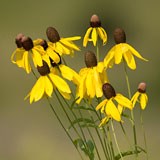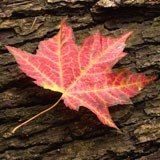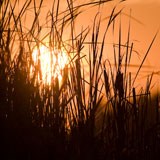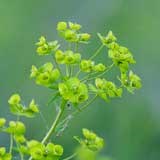IntroductionThe Twin Cities falls within the eastern broadleaf forest biome dominated by hardwood trees such as ash, oak, and maple. However, at one time, this area was dominated by prairie and savanna ecosystems and careful observers can still spot grasses, sedges, and flowers that hint at those original plant communities. Wetland plant species still tend to dominate marshy areas. And, of course, there are plants rooted in soils underlying more permanent water bodies, such as the Mississippi and Minnesota Rivers and the lakes and ponds of the river floodplains. There are also invasive and exotic plant species that threaten those remaining pockets of natural plant communities. 
Plants of the Tallgrass Prairie and Oak SavannaPrairies are highly productive systems dominated by a few species of grass, with wildflowers providing great diversity. Most prairie and savanna species have deep roots to reach moist soils in time of drought and do well in warm weather. Most prairie plants are extremely long-lived and are fire- and grazing-adapted.
Plants of the Eastern Broadleaf ForestThe Twin Cities sit on the edge of prairie and eastern broadleaf forest. The cool shade of a forest is inviting on a hot summer day, but plants that live here must have adaptations to cope with the lack of sun. Woodland plants include not just trees, but also early spring ephemeral flowers. 
Plants of the Rivers, Lakes, and WetlandsPlants living in wetlands must be able to survive both flooding and drying as water levels may fluctuate seasonally. Some live submerged or floating in and on permanent waters, while others emerge and stand upright above the water. Some drift freely on currents and are pushed by wind. Many must endure the scouring effects of ice break up in spring. 
Invasive Plant SpeciesInvasive plant species are introduced species that live beyond their normal range and that have characteristics that are detrimental to their new location. These troublesome plants are adaptable, aggressive, have a high reproductive capacity, and generally lack natural enemies in their new location and outcompete native species. Interactive Species ListThis species list is constantly updated and may reflect a more recent checklist than the printable resource above. Search using the keyword "Vascular Plants" selected from the drop-down menu. The results may be printed, exported, or downloaded as a spreadsheet for greater analysis.Select a Park:Select a Species Category (optional):
Search results will be displayed here.
Get InvolvedDid you know you can help us figure out the distribution of plants and animals in our park? iNaturalist.com is a citizen science project that allows us to track the location of species we are studying, such as otters, and invasive species within our park. Get your iNaturalist account and help out! Check out our iNaturalist projects: |
Last updated: March 18, 2019
